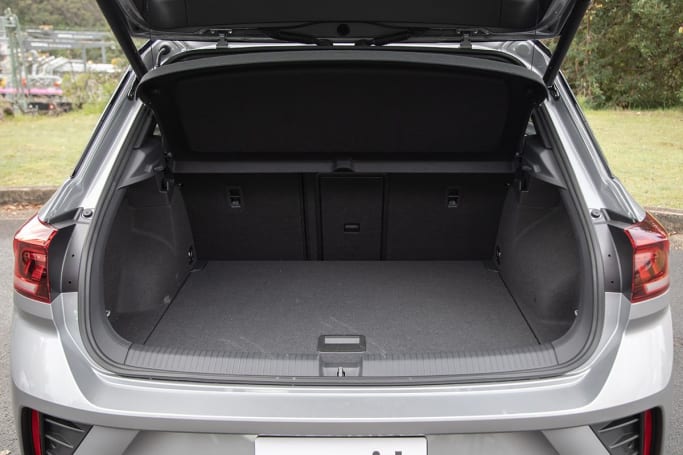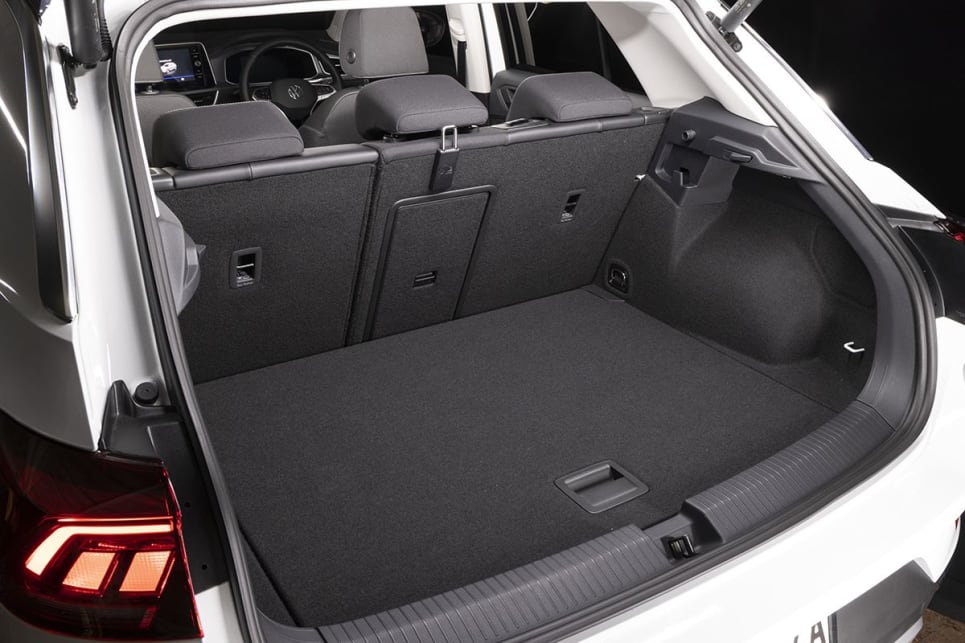Volkswagen T-Roc Kofferraum: How Much Luggage Does This Crossover Actually Fit?
The Volkswagen T-Roc has quickly become a popular choice in the compact crossover SUV market. With its stylish design, versatile features, and fuel-efficient engines, it’s easy to see why. But for many potential buyers, a crucial question lingers: How much can you actually fit in the back? This article dives deep into the Volkswagen T-Roc’s Kofferraum (German for “trunk” or “cargo area”) to provide a comprehensive understanding of its cargo capacity, helping you determine if it meets your needs.
Understanding the Volkswagen T-Roc’s Cargo Capacity: Key Figures
The T-Roc’s Kofferraum is a key factor in its practicality. Here’s a breakdown of the key figures you need to know:
- Rear Seats Up: The standard cargo volume with the rear seats in their upright position is 445 liters (15.7 cubic feet).
- Rear Seats Down: Folding the rear seats expands the cargo area significantly, offering a maximum capacity of 1,290 liters (45.6 cubic feet).
- Practical Considerations: These figures are measured using the VDA (Verband der Automobilindustrie) standard, which focuses on the usable space.
Exploring the T-Roc’s Kofferraum Dimensions and Features
Beyond the raw numbers, understanding the dimensions and features of the T-Roc’s Kofferraum provides a more complete picture of its usability.
- Shape and Accessibility: The Kofferraum generally offers a practical, square shape, making it easier to load and unload items. The wide opening and relatively low loading lip contribute to easy accessibility.
- Rear Seat Flexibility: The rear seats typically fold in a 60/40 split, providing flexibility for carrying both passengers and cargo simultaneously.
- Additional Features: Depending on the trim level, you might find features that enhance the Kofferraum’s functionality:
- Adjustable Boot Floor: Provides a flat loading surface when the seats are folded down and can be lowered for maximum cargo volume.
- Cargo Net or Cover: Helps to secure your belongings and prevent them from shifting during transit.
- 12V Power Outlet: Useful for charging devices or powering small appliances.
Comparing the T-Roc’s Cargo Space to Competitors
The compact crossover segment is competitive. Let’s see how the T-Roc’s Kofferraum stacks up against some of its rivals:
- Volkswagen T-Cross: The smaller T-Cross offers less cargo space, with around 385 liters (13.6 cubic feet) with the seats up and 1,281 liters (45.2 cubic feet) with the seats down.
- Nissan Qashqai: The Qashqai generally provides slightly more cargo space, typically offering around 430-504 liters (15.2-17.8 cubic feet) with the seats up, and 1,598 liters (56.4 cubic feet) with the seats down.
- SEAT Ateca: Being built on the same platform, the Ateca offers similar cargo space to the T-Roc, often exceeding it slightly with the seats up.
- Consider your needs: Compare the T-Roc’s capacity to the specific requirements of your usual cargo, whether it’s daily groceries, luggage for a family holiday, or sports equipment.
Real-World Applications and Practical Considerations
The T-Roc’s Kofferraum is generally well-suited for various everyday tasks:
- Daily Commuting: Easily accommodates groceries, gym bags, or smaller shopping trips.
- Weekend Getaways: Sufficient space for luggage and gear for a couple or a small family.
- Family Life: The split-folding rear seats offer flexibility for carrying child seats and cargo.
Important Considerations:
- Optional Features: Depending on the chosen trim and optional features, the available cargo space may vary slightly.
- Spare Tire: The presence of a spare tire can impact the usable space.
- Loading Height: The relatively high loading lip can make it a bit more challenging to load heavy items.
Conclusion: Assessing the Volkswagen T-Roc’s Cargo Capacity
The Volkswagen T-Roc offers a practical and versatile Kofferraum that caters to a wide range of needs. With 445 liters of space with the rear seats up and 1,290 liters with the rear seats folded down, it provides a competitive cargo capacity within its class. While it may not be the absolute leader in its segment, its usability, combined with its stylish design and overall versatility, makes it a strong contender for those seeking a compact crossover. Carefully consider your cargo needs and compare the figures against other models to ensure the T-Roc is the right fit for your lifestyle.
Frequently Asked Questions (FAQs)
1. Can I fit a stroller in the T-Roc Kofferraum?
Yes, depending on the size of the stroller. A compact stroller will likely fit easily with room to spare. Larger, full-size strollers might require the rear seats to be partially or fully folded.
2. Does the T-Roc have a spare tire?
Some models may come with a spare tire, while others may offer a tire repair kit. Check the specific configuration of the T-Roc you are considering. The presence of a spare tire may impact cargo space.
3. Is the Kofferraum floor flat when the rear seats are folded down?
Typically, the T-Roc provides a relatively flat loading floor when the rear seats are folded down, particularly if equipped with the adjustable boot floor.
4. Can I fit luggage for a family of four in the T-Roc?
For a family of four, the T-Roc can handle luggage, but it may require careful packing, using soft-sided bags, or partially folding the rear seats. Consider the size of your luggage and the duration of your trip.
5. What are the benefits of the adjustable boot floor?
The adjustable boot floor allows you to create a flat loading surface when the rear seats are folded down, maximizing the available cargo space. It can also be lowered to provide more vertical space for taller items.




